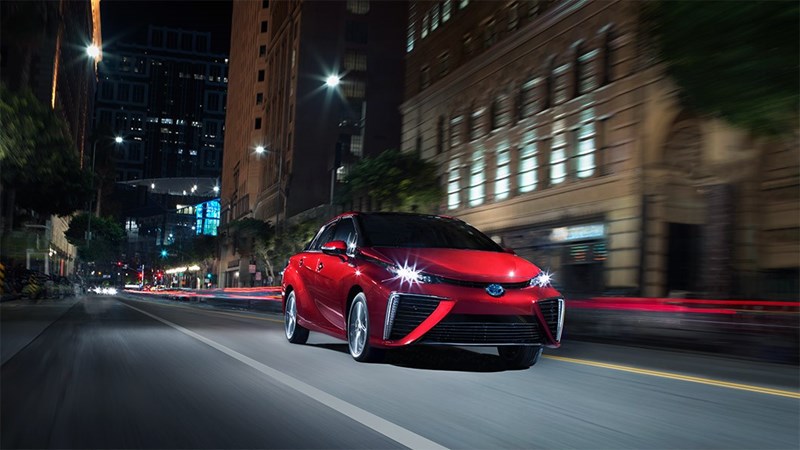We need to talk about hydrogen
1 minute read
Gavin Thompson
Vice Chairman, Energy – Europe, Middle East & Africa

Gavin Thompson
Vice Chairman, Energy – Europe, Middle East & Africa
Gavin oversees our Europe, Middle East and Africa research.
Latest articles by Gavin
-
The Edge
A world first: shipping carbon exports for storage
-
The Edge
WoodMac’s Gas, LNG and the Future of Energy conference: five key themes
-
The Edge
Nigeria’s bold strategy to double oil production
-
The Edge
US tariffs – unpredictability is the strategic planners’ nightmare
-
The Edge
Upside pressure mounts on US gas prices
-
The Edge
The coming geothermal age
I just came back from Tokyo and a key theme for many Japanese energy companies continues to be future investment in E&P and whether long-term growth in oil and gas demand will materialise given the pace of energy transition.
Wood Mackenzie is by no means ‘old school’ in our view of the future energy mix and we devote a massive amount of effort and analysis to energy transition. Indeed, in several areas we are more aggressive on the pace of change than many others while firmly believing the world still needs significant and sustained future investment in upstream supply.
So far so good. But then in several meetings I received the final question…
And what about hydrogen?
In the world of energy modelling, forecasting hydrogen is a major headache. Why? Because even though hydrogen makes up about 75% of all mass in the universe, it’s just not that straightforward to extract, store and transport. Its future role also seems to polarise opinion. Speak to a believer and hydrogen is the revolutionary fuel to lead us into a zero-carbon future. Listen to a cynic and it’s an expensive, carbon-intensive and dangerous pipedream (last month’s explosion at a hydrogen refuelling station in Norway didn’t help) that will only play a marginal role in decarbonisation.
A layman’s guide to hydrogen
What most of us already know is that hydrogen has the potential to play a role in supporting decarbonisation given that it emits no CO2 when burned. The problem is that existing processes to extract and purify hydrogen for use as a fuel are expensive and energy-intensive.
Currently virtually all hydrogen is produced from fossil fuels and the carbon story isn’t great. With hydrogen extracted from natural gas through steam reforming, something like five times as much CO2 is emitted for every kilogram of hydrogen produced. From coal, which needs gasification first before hydrogen can be recovered, it gets even worse. Large-scale production simply isn’t going to fly without carbon capture and storage (CCS), inevitably increasing costs.
An alternative option for the manufacture of hydrogen is via the electrolysis of water, which applies an electrical current to release hydrogen from its oxygen bond. But producing hydrogen via this “green” method today would mean diverting some power that would ordinarily be used for existing generation needs as currently it isn’t cost effective in most locations to produce hydrogen through simple excess wind/solar curtailment alone. This is an obvious flaw as that would lead to additional electricity demand and the potential for increased carbon emissions depending on the fuel mix. But many technology companies are pushing hard to lower the cost of electrolysers to the point that they could subsist on excess wind/solar alone. Third party estimates see this horizon from as early as 2025 through to 2050 - a wide range.
Could this work? I think we can find a useful analogy in Bitcoin. In the early days, anyone with access to power could just run computers/miners to excess, and we’re all aware of how much energy that required. But now, some states and regions (e.g. Iceland, Pacific NW) are being more thoughtful about the process with excess power that wouldn’t ordinarily be needed to mine for Bitcoin. In these places there’s no net increase in electricity generation; it’s just using the excess in a unique way. I think this could provide a much more thoughtful approach to green hydrogen too.
The showdown between hydrogen and plug-in EVs
When considering how any unproven technology might progress, I’m a firm believer in following the money. At present, Japan remains the undisputed leader in developing hydrogen as a future fuel (the Olympic torch for the 2020 games will be burning hydrogen!). Prime Minister Abe speaks boldly of Japan being a hydrogen society by 2050. This needs huge advances in CCS and a mammoth build out of supply, transportation and storage, all to be achieved with a stated goal of reducing production costs by 90% by 2050. All feels a bit rabbit from the hat.
Meanwhile, auto manufacturers such as Toyota are increasing investment and output of hydrogen fuel cell vehicles, but the numbers (and sales) remain tiny and growth is being driven through subsidy. For instance, Toyota’s Mirai model comes with a government subsidy of around US$20,000 per vehicle. At the same time, Japanese manufacturers continue to plough investments into plug-in electric vehicles (EVs). Talking to energy companies in Tokyo, the consensus supports more money going into plug-ins over hydrogen fuel cells.
The Toyota Mirai looks great, but numbers remain small (Source: Toyota)
In addition to Japan, China will be hugely influential on how future hydrogen supply and usage evolves. In April this year, the government announced that hydrogen would support decarbonisation of the country’s transport sector. But look closely at government policy, and I see China’s leaders remaining massively supportive of plug-in EVs over any significant policy switch towards hydrogen fuel cell vehicles.
My week in Japan inevitably left me with more questions than answers. But one immediate observation is that the future role of hydrogen versus other fuels isn’t an ‘either/or’ debate. The focus instead needs to be on complementarity with other low carbon technologies as we move forward with energy transition.
At Wood Mackenzie we’re increasing spending time on our research on the production costs and methods, as well as the multiple uses of hydrogen. Look out for the launch of our Energy Transition Outlook later this month.
Note: for interesting insight on the potential complimentary nature of the LNG and hydrogen businesses, and the scope for partnerships between LNG producers and Asian users take a look at this report from the APPEA conference in Brisbane.
APAC Energy Buzz is a blog by our Asia Pacific Vice Chair, Gavin Thompson. In his blog, Gavin shares the sights and sounds of what’s trending in the region and what’s weighing on business leaders’ minds.







